#senta moses
Explore tagged Tumblr posts
Text

Up next on my Christmas 🎄 movie marathon...Home Alone (1990) on classic DVD 📀! #movie #movies #comedy #Christmas #homealone #johnhughes #ripjohnhughes #ChrisColumbus #macaulayculkin #JohnHeard #RIPJohnHeard #catherineohara #joepesci #danielstern #johncandy #ripjohncandy #DevinRatray #kieranculkin #angelagoethals #michaelcmaronna #RajaGosnell #hillarywolf #gerrybamman #LarryHankin #robertsblossom #SentaMoses #RalphFoody #annaslotky #HopeDavis #jedidiahcohen #BillErwin #billiebird #DVD #90s #merrychristmas2024 #merrychristmas
#home alone#john hughes#rip john hughes#chris columbus#Macaulay Culkin#john heard#rip john heard#Catherine O'Hara#john candy#rip john candy#gerry bamman#devin rattray#angela goethals#kieran culkin#raja gosnell#larry hankins#joe pesci#daniel stern#billie bird#bill erwin#Michael C Maronna#hillary wolf#roberts blossom#hope davis#ralph foody#anna slotky#senta moses#jedidiah cohen#90s#dvd
2 notes
·
View notes
Text
OH I LOVE SENTA MOSES NOW
(^ woman who made the "OH MY F*CKING GOD" tweets with the proposal points and the below. and thanks to Neil Gaiman for continuing to reblog GOOD ACCURATE information on the strike [there's a lot of well-intentioned -- and very ill-intentioned -- misinformation about it] )


here's all the SAG-AFTRA pages she posted (source)

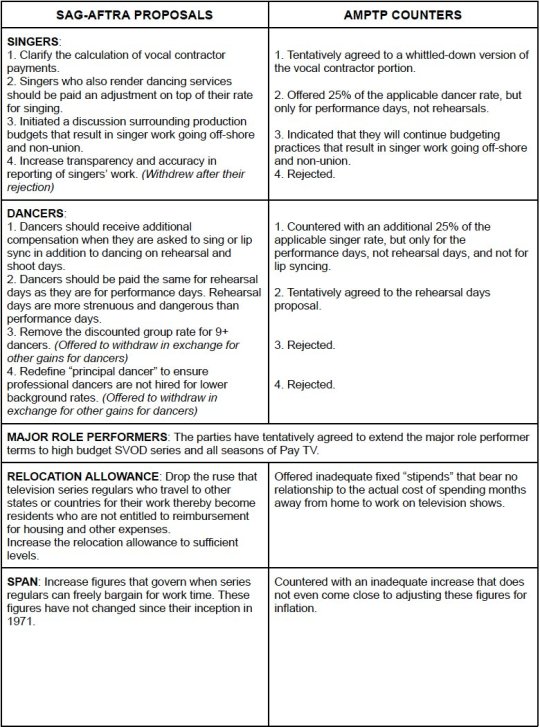







parts that made my eyebrows fly to the ceiling:
(not posted in a specific order and doesn't include even close to everything. sorry. and if i'm misunderstanding a point -- PLEASE let me know and provide a source so i can learn more, and i'll correct this post)

PENALTIES FOR NOT PROVIDING MEAL BREAKS HAVEN'T BEEN UPDATED FOR OVER 60 YEARS (inflation between 1961 and 2023 is roughly 920.43% [source] )

"APPLY ... REST PERIODS AND PROTECTIONS FOR MINORS" - REJECTED

"PERFORMERS HIRED BY THE WEEK ... SHOULD BE GIVEN AT LEAST A TENTATIVE WINDOW OF WORK DATES" BECAUSE THE JOB MIGHT GIVE THEM A CONTRACT THAT SAYS THEY CAN'T TAKE OTHER WORK IN THE MEANTIME

"TELEVISION SERIES REGULARS" ARE CURRENTLY MADE TO BE COUNTED AS "RESIDENTS" OF WHERE THEY WORK, WHICH MEANS THEY CAN'T GET REIMBURSED FOR HOUSING AND OTHER EXPENSES.
IN RESPONSE, THE COMPANIES OFFERED "FIXED 'STIPENDS' " THAT DON'T HAVE ANYTHING TO DO WITH "THE ACTUAL COST OF SPENDING MONTHS AWAY FROM HOME TO WORK ON TELEVISION SHOWS"

TENTATIVELY AGREED PERFORMERS DON'T NEED TO AUDITION IN THE NUDE OR BE REQUIRED TO DO A STUNT IN AN AUDITION

this is a long one so (fortunately these are currently "tentatively agreed" on [even though that still means this WASN'T standard practice before / maybe isn't yet] ):
FOR SCENES INVOLVING NUDITY OR SIMULATED SEX THERE WILL BE INTIMACY COORDINATORS
DISCRIMINATION AND ANTI-HARASSMENT INFORMATION WILL BE PROVIDED ON REQUEST, INCLUDING HOW TO REPORT VIOLATIONS (WHY NOT JUST PROVIDE IT UP FRONT, HM)
"BACKGROUND ACTORS WILL BE GIVEN AT LEAST 48 HOURS NOTICE OF SCENES INVOLVING NUDITY OR SIMULATED SEX ACTS" (TWO DAYS MINIMUM, HM)

YOUR ARBITRATOR (more or less company-appointed lawyer) NEEDS TO BE ALIVE
and a random comment that got me to chuckle about that last point above:

hold the line. please hold the line. i can't believe these problems are from 2023 and not 1923
edit - i needed to include this comment because seriously:


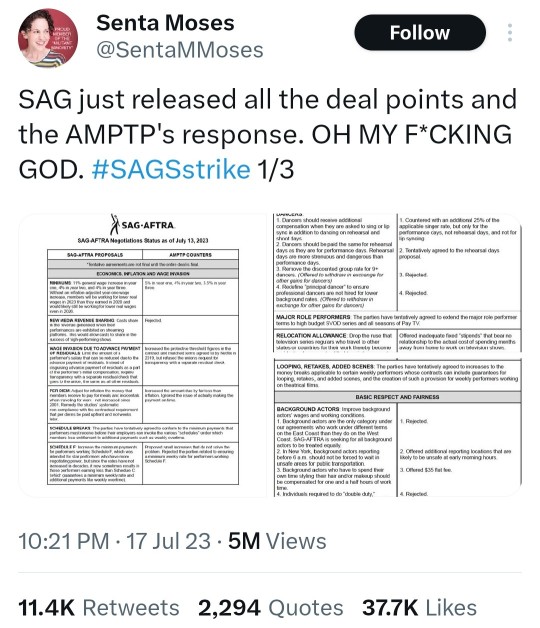
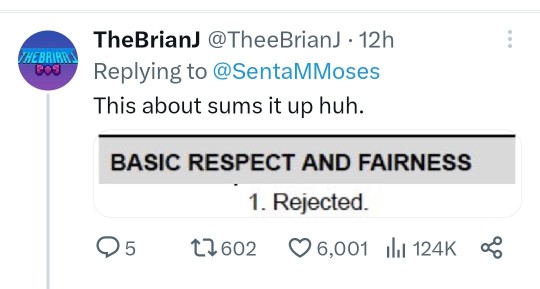

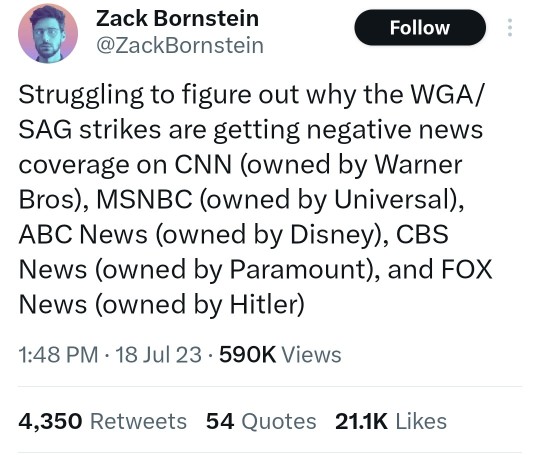
68K notes
·
View notes
Text

Happy 73rd Birthday to Paul Zaloom!!! Wishing you the best birthday and all the joy in the world. From all of us at "Beakman Fans".
Wishing Paul Zaloom, a very special birthday. Today December 14, is his 73 birthday. Here he is seen as Beakman, in fan art, along with Phoebe {Senta Moses} saying "Hey, check this out." Liza {Eliza Jane Schneider} singing "Happy Birthday". Josie {Alanna Ubach} preforming a reverse puppet show, with the puppet seated on her shoulder, and she is popping up from a hole in the counter, after she removed the sink. Paul as Beakman, demonstrates the passage of time with salt passing through a tube, in a hourglass stye experiment. While Lester {Mark Ritts} salutes, and indicates how large a cardboard tube is needed for the experiment.
#beakmansworld#paul zaloom#alanna ubach#eliza jane schneider#beakman#sentamoses#markritts#kino#kinosstorytime#Storytime#PBS Storytime
1 note
·
View note
Text
Not sure if this is here yet, and this isn't going to be easy for me to Image ID on my phone, so I hope someone else can help:
Posted by Senta Moses (@sentammoses) on Twitter.
Click on images for larger view.









Which one do you feel like is most disgusting?
Fuck the AMPTP!
1 note
·
View note
Photo






Here are a few new Senta headshots! There are a few more over on her IMDb page.
Photos by Cathryn Farnsworth.
2 notes
·
View notes
Photo



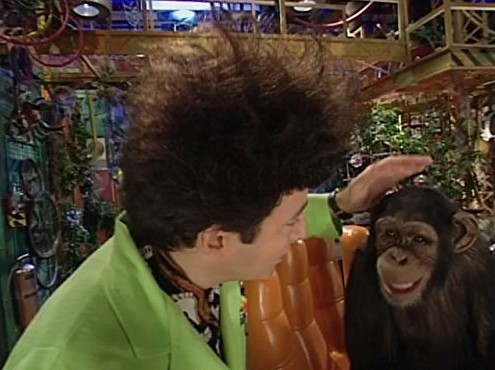


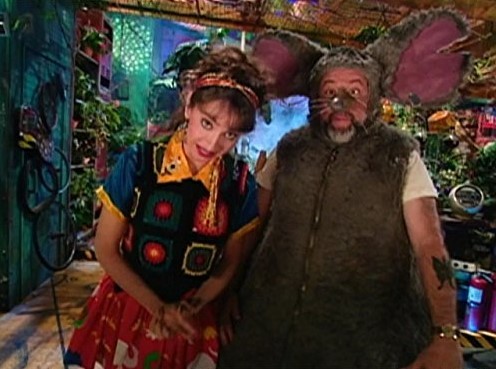

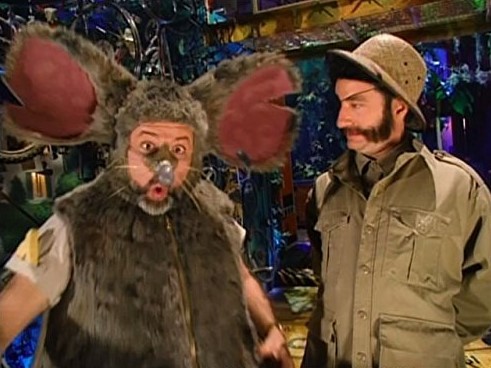
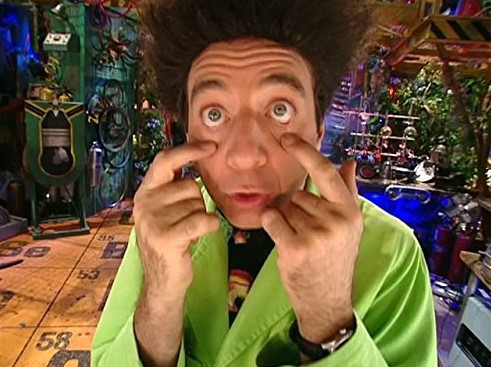
Beakman's World
84 notes
·
View notes
Photo

Senta Moses Mikan
Facts
August 8, 1973
American actress
She is of Italian and Lebanese descent
Filmography
Meg [ Badge of a Quitter: 2018]
Mrs. Silverstein [ Bella and the Bulldogs: 2015-2016]
Principal Penelope [Faking It!: 2014-2016]
Lizzi [Greek: 2008-2009]
Winnifred [General Hospital: 2009]
Dot [ Sister, Sister: 1997-1998]
Nikki [ Running the Halls: 1993]
Tracy [ Home Alone: 1990]
Appearance
brunette
curls
brown eyes
1.49m
Roleplay
playable: young adult, adult
#Senta Moses Mikan#fem 70s#fem american#70s fem american#70s fem italian descent#70s fem lebanese descent#badge of a quitter#bella and the bulldogs#faking it#greek#general hospital#sister sister#running the halls#home alone#brunette fem young#brunette fem adult#70s fem brunette#curls fem young#curls fem adult#70s fem curls#brown eyes fem young#brown eyes fem adult#70s fem brown eyes#young adult female#adult female
1 note
·
View note
Text
Meet The Greys
Father-
Name: Antony Grey Age: 59 (deceased) Occupation, when alive: General surgeon FC: Alessio Boni

Mother-
Name: Evelyn (Eve) Grey Age: 62 Occupation: DJ on a Christian radio station. FC: Senta Moses

Older Sister-
Name: Anastasia Grey Age: 30 Occupation: Teacher FC: Winona Ryder

Middle Child (son)-
Name: Damien Grey Age: 23 Occupation: Pianist. FC: Darren Criss

Youngest daughter-
Annabelle Grey Age: 17 Occupation: High School Student FC: Vanessa Marano

4 notes
·
View notes
Text
The Flowers of Jigokuraku
Disclaimer: this essay will refer to fairly recent chapters (53 and forward), so if you are a new reader, I advise you to catch up before you read it. And as usual, I am not Japanese nor Chinese, so my arguments and explanations are based on the research I made, but I won’t pretend I’m absolutely right on everything. My goal is merely to provide a comprehensive understanding of the references used in Jigokuraku, as well as a historical context to give the in-story points of view more perspective. English isn’t my native language as well, so I hope my explanations won’t be too wonky, grammatically speaking. On these words, I hope you’ll deem this essay an enjoyable or educative read. [Originaly posted here]
In this essay, we’ll study the cultural references used for the island and its inhabitants. We’ll see the reason why certain characters seem to have a rough knowledge of the island, providing a historical context that’ll help us understand why and how these legends are known both in-story and from a narrative perspective. The legends mentioned will be related to Xu Fu and the Immortals, since they are the basis for the mystical island in Jigokuraku.
I. Education during the Edo era
The Xianren, the Immortals, are brought up by both Senta and Toma on chapter 16. These characters have generally proved fairly educated and useful to provide insight to the reader through their discussions with other characters (GabiGang and Chôbe). However, one could wonder **why** apparently random characters like them would know about that sort of thing.
The Tokugawa period represents roughly 250 years of peace and stability throughout Japan and, despite the sakoku, the isolation of the country, it still received influences from Korea, China and Europe (via the Dutch traders). This general stability provided the perfect set up to develop Japanese culture as we know it, and to spread ideas through education. Indeed, education wasn’t solely reserved to the upper Samurai class, and many schools would open everywhere to provide at least a certain level of reading/writing/counting to young Japanese, and going as far as offering classes on Rangaku (Dutch studies), Kangaku (Chinese studies) or military strategy for the ones who could afford it.
Terakoya, temple schools opened for commoners, flourished during the Tokugawa era with a function similar to our current primary system. These schools developed with the blessing of the Shogunate, which would use them to promote Confucianism – the set of morals used as a basis for Japanese society during the Edo era. Such system would indeed provide all the knowledge necessary for the four main casts (Samurai, Peasants, Artisans and Merchants) to understand where they stood in the hierarchy and how much they could afford to learn as well. Furthermore, the daimyo, the feudal lords, would also create hankô, the schools of their domain (Han), to provide education to the children of their retainers. These *hankô* would follow the model of Shôheiko, the Confucian school administered by the Shogunate itself, in order to promote the study of Kangaku, Confucianism, history and even medicine.
Furthermore, knowledge could be more easily spread through time thanks to the development of woodblock printing. As such, even a commoner could have access to various texts and illustrations, which helped the general population learning about both historical facts and legends about both Japan and China. Sinophiles of this period would work to conciliate historical facts and legends and have them work together to integrate Chinese elements in Japan’s history without negating Japan’s own cultural and historical identity, while certain legends would see themselves modified and expanded according to both China’s and Japan’s cultural needs.
All in all, these facts about education and scholarly pursuits can easily explain why Senta and Toma would know about things such as the Immortals: it could have been part of what they studied before coming to the island, whether it was from a historical, philological or religious point of view. They would at least have a general knowledge of it because of the schooling they’d been provided when they were younger.
II. Xu Fu and the search for immortality
The story of the half-legend, half-historical figure Xu Fu starts in China, with his appearance in the Shiji (Records of the Grand Historian) by Sima Qian (145 – 90 BCE). The character quickly gained popularity and his story was expanded in later writings. These writings reached Japan during the Heian period (794 – 1186) and were further developed during the medieval period, yet their peak happened during the Edo era. As previously mentioned, Kanraku, the Chinese studies, became common under the Tokugawa thanks to the Confucian system imposed by the Shogunate. This in turn helped the study of Xu Fu and his quest to integrate it in Japanese history and culture, by notoriously adding that the quest for immortality led him to Japan – something never mentioned in the initial Chinese texts, but that appeared during the 10th century, thus potentially suggesting an influence between China and Heian Japan during that time. This notably led to three theories as to where Xu Fu and his party landed, and what Mount Penglai (where the Immortals are, known as Hôrai in Japanese) is exactly. The first two theories were made during the late Heian period, and situated Xu Fu’s landing near Mount Fuji or in Kumano (currently Mie Prefecture, near Nara). Without entering details (because it’d require a whole post just for Xu Fu), these theories became known during the Ming and Qing dynasties, as Japanese monks and scholars travelled to China and used the story of Xu Fu as a basis of Sino-Japanese friendship through cultural common grounds. The third theory appeared during the following Kamakura era (1185 – 1333), and located Xu Fu at Atsuta Shrine (Nagoya), with the shrine itself being Penglai/Hôrai. During the medieval period, these writings and theories were used as a basis to give Japan a proper position in Chinese culture, but the story really started gaining traction under the Tokugawa, thanks to the cultural exchange between Japan and China as well as the general intellectual development in Japan.
Historiography became widespread during Edo era, compiling and inventing stories became common to the point even Jesus and Moses had the story of their travel to Japan. Furthermore, these stories became popular with the many works of zuihitsu authors (miscellaneous writings), who used these stories to gain more readers. Edo historian Hayashi Razan even confirmed through his researched that Mount Fuji could indeed be Mount Penglai/Hôrai. According to the stories of that time, Xu Fu brought Chinese methods tied to textile, agriculture and medicine with him, sharing them with the inhabitants of the region and settling down there as well. Yet Kumano remained the most popular theory, leading to the creation of a shrine, Xu Fu’s tomb as well as the tombs of his seven retainers, Jofuku no miya (Xu Fu Palace), Mount Hôrai... These elements were used in numerous texts, travel records and poems, even famous ukiyo-e painter Hokusai drew Painting of Xu Fu Looking Up at Mount Fuji. The legend became larger as the theories about Xu Fu’s location varied and covered Japan (not counting Hokkaido), from Aomori to the North of Honshu to Kagoshima in Kyushu. All of these legends around Xu Fu were supported by the bakufu and the daimyo, who used them to promote the cultural importance of their Han and encourage tourism.
From an in-story perspective, we can see how and why some characters would be knowledgeable about certain things on the island, or at least recognise certain names, and even why the Shogun himself decided to take the search for immortality so seriously. From a narrative perspective, I commend UG for his twist on the location of Penglai/Hôrai, making it a mysterious man-made island south of the Ryukyu Kingdom (nowadays Okinawa) that fits the descriptions of a paradise... Only at a first glance. It gives the readers a refreshing take on a legend that has been told and modified for centuries to fit all sorts of narratives, and makes the story much creepier.
III. Xianren, the Immortals
Before talking about the Immortals and the material given by UG, we should see where the concept of immortals comes from, and how it evolved in time.
The concept itself comes from a religious movement called Fangxiandao, the Way of Mages and Immortals. This movement came to existence during the Springs and Autumns period (771 – 256 BCE), but fully developed during the Warring States period (771 - 256 BCE as well) and united scholars of various specialities (alchemy, divination, rituals, exorcism...) around rulers and aristocrats seeking physical immortality and under the belief that Immortals lived in the islands of the Yellow Sea and the East China Sea. Theories relating to Yin Yang and the Five Elements emerged during the Warring States period, and seemed to include the Yellow Emperor as well, since he was perceived as a Taoist Immortal (and is referred as one of the first Emperors in the previously mentioned Shiji). It is thanks to this movement that the concepts of the lands of Immortals (Penglai, Fangzhang and Yingzhou – nowadays Mount Kunlun) have been formulated and became the reason of many quests in search of these places. The most famous one is Xu Fu’s search for immortality, for which he’d been provided with a thousand of young boys and girls, and who never came back from his search. The Fangxiandao opened the way to Taoism under the Han dynasty, but the core concept of immortality and Immortals remained despite the religious shift. With Taoism, an Immortal becomes an incarnation of duality, mobile yet without form, residing among the stars and in the deepest caves and giving sacred texts to their most deserving apprentices only. I’m not going to explain the different types of alchemy and the rituals that lead to immortality, as this topic has already been explained by u/gamria and in the manga itself. However, I hope this explanation on what the Immortals are from a cultural point of view helps understand why certains characters in the manga would react to them as if they were somewhat aware of the general ideas about the Immortals and a character like Xu Fu. It is thanks to the use and expansion of Chinese legends that these elements became known from the Japanese population during the Edo era.
The most famous Immortals are the Eight Immortals, divine beings in Taoism popular both from a religious and literary perspective. The most famous pieces concerning them are The Eight Immortals Cross the Sea and The Immortals Celebrating the Anniversary of the Goddess. The first one relates the crossing of the sea to go to Penglai (or visit the goddess Xiwangmu), during which they renounce to take a boat and decide instead to show their magical skills by transforming their respective amulets into one. This action displeases the Dragon-King, who captures one of the Immortals, which leads to a battle. The situation is solved when Bodhisattva Guanyin reconciles both parties. The second one relates the Peach Festival, a feast of immortality organised by the goddess Xiwangmu, making the Eight Immortals a symbol of longevity and immortality. They are also the basis for a martial art imitating the movements of a drunk person, and based on a text during which the Immortals are drunk. Interestingly enough, counting Mei, we have eight Immortals drunk on Tan in Jigokuraku. And it’s still fine to remove Mei from the count, because it’ll make seven Immortals... Like the seven retainers of Xu Fu, according to the aforementioned writings that could be find during the Tokugawa period.
Now, concerning our Immortals, Rien and his friends, who have been tied to Xu Fu in chapter 53. I have noticed specific references concerning them, aside from Taoism: the flowers associated with them, which in my opinion have been purposefully chosen by UG for their cultural symbolism. I’m not going to make research on their official names though, since I don’t speak Japanese nor Chinese and would rather avoid misinformation caused by my own ignorance. If someone else feels like doing that, I’d certainly be glad to read it!
Rien: as it raises unstained from the mud, the lotus is commonly associated with purity and perfection. It is also one of the Eight Auspicious Symbols of Buddhism, a throne for Buddha, as well as the flower that grew under his feet when he walked. In China, it is one of the 4 major flowers, and it’s associated with Summer as well as He Xian-gu, one of the 8 Immortals.
Mu Dan: the peony has a major significance in China, both at a cultural and political level. It was the national flower during the Qing dynasty (1644 – 1911) and it is considered the King of Flowers, being associated with wealth, honour, aristocracy, love affection and feminine beauty.
Tao Fa: the peach blossom is associated with vitality and immortality, since it blooms before the leaves sprout. Peach wood was also believed to ward off evil spirits, and thus peach wood staves would be used for such purpose, especially to clear the way for the Emperor.
Ju Fa: the chrysanthemum is one of the Four Gentlemen in Chinese culture, along with plum blossom, orchid and bamboo. It is associated with Autumn and the 9th month of the year, as well as joy and long life.
Zhu Jin: the hibiscus is a popular flower associated with fame, riches, glory and splendour, given as a gift to both men and women.
Ran: the orchid is associated with love, beauty, wealth, fortune and unity. As such, it can also be used as a symbol for married couples. It is also associated with scholarly pursuit, nobility, integrity and friendship, as well as Confucius himself. It is a flower of Spring.
Gui Fa: the sweet osmanthus (cassia spice tree) is a flower traditionally praised by poets and associated with the Mid-Autumn festival in China. Osmanthus wine is seen as typical “family reunion” wine. Since it sounds similar to the word for “expensive, noble, valuable”, it is associated with these concepts. According to a legend, the moon has a cassia tree that produces a drug for immortality.
Mei: the plum blossom is both one of the Four Gentlemen and one of the Three Friends of Winter (with Pine and Bamboo). It is a symbol of longevity since, like peach blossom, the flowers bloom before the foliage sprouts. Its five petals are also associated with the Five Gods of Prosperity and the Five Good Fortunes.
As you can see, it looks like UG didn’t pick the flowers used to create Lord Tensen just because they were pretty. These flowers hold a notable cultural importance, and reflect well the high status of Lord Tensen on the island. It’s the botanical equivalent of screaming at the reader “*they are the boss of this place*”, if you will. Interestingly, these symbols are the part I started with for this essay, since in its first form I was seeking an answer to the self-asked question “are the flowers used for Lord Tensen significant one way or the other concerning the plot”, and decided to do some research based on the botanical, cultural and medicinal aspects of the flowers (cue the title of this essay, which I liked and kept because it’s still relevant)... But it was inconclusive on my end, and I’m not educated enough on these matters to dig them properly. Still, it was interesting to learn more about the cultural significance of these flowers and the potential reasons why they have been selected by UG for his characters.
To conclude, we can see through the research on certain references given by the characters in-story that there are two interesting layers: first, education during the Edo era, the interest for Chinese culture and its implementation in Japanese texts and how it is reflected via the comments and explanations provided by some characters. Second, the actual references used by the author, their origin and how they are implemented in the narration to construct a story that provides the reader with a new take on an ancient legend.
While I did my best to keep it short, it also means I didn’t go as in-depth as I could have, but I wanted to provide a general explanation on philology without going in too deep and ending up lost in my own thinking pattern. Still, it was very interesting to read about these elements, which provided a much clearer narrative frame for. I do hope you found it as entertaining or informative as I did!
Sources
Education in the Tokugawa era
Sinophiles and Sinophobes in Tokugawa Japan: Politics, Classicism, and Medicine During the Eighteenth Century
Wai-ming Ng, Imagining China in Tokugawa Japan: legends, classics and historical terms
Fangxiandao , Xian , Eight Immortals
Taoism in Japan
Chinese Symbols
Flowers and Fruits
23 notes
·
View notes
Text

Up next on my Christmas 🎄 movie marathon...Home Alone 2: Lost In New York (1992) on glorious vintage VHS 📼! #movie #movies #comedy #Christmas #johnhughes #ripjohnhughes #ChrisColumbus #homealone #homealone2 #homealone2lostinnewyork #MacaulayCulkin #JohnHeard #RIPJohnHeard #catherineohara #joepesci #danielstern #DevinRatray #KieranCulkin #timcurry #RobSchneider #danaivey #DonaldTrump #gerrybamman #brendafricker #EddieBracken #ripeddiebracken #annaslotky #hillarywolf #jedidiahcohen #allysheedy #RalphFoody #SentaMoses #roncanada #jimmiewalker #riptaylor #ripriptaylor #michaelcmaronna #bobeubanks #vintage #VHS #90s #merrychristmas #merrychristmas2024
#home alone#home alone 2#home alone 2 lost in new york#macaulay culkin#Catherine O'Hara#john heard#devin ratray#joe pesci#daniel stern#Kieran Culkin#senta moses#michael c maronna#tim curry#rob schneider#dana ivey#ally sheedy#donald trump#eddie bracken#jedidiah cohen#hillary wolf#vhs#90s#christmas#merry christmas 2024#merry christmas#brenda fricker#anna slotky#ralph foody#gerry bamman#ron canada
0 notes
Text
E VENNE L'ACQUA CHE NON SPENSE IL FUOCO, SUI CUI SOFFIÒ IL VENTO, CHE SPAZZÒ LA TERRA, CHE INIZIÒ A TREMARE, DOVE MIO PADRE LAVORÒ.
L'acqua alta di Venezia in questi giorni è lo specchio della situazione italiana in generale. Oltre ai danni materiali alla parte storica e artistica della città, chi ha subito i maggiori danneggiamenti sono i cittadini e tutti i negozianti/artigiani che operano nella città lagunare. Anche in questo caso si tratta di un evento che era prevedibile e come tale non si è fatto nulla per prevenire danni maggiori. La parte politica di Venezia e della Regione, come spesso accade, aveva promesso una soluzione. Il famoso Mose, pensato subito dopo l'alluvione del 1966, a distanza di 53 anni è ancora un'utopia. Si è vero il cantiere c'è ma tra burocrazia e sospensioni varie è solo un cantiere. Senza contare che la tecnologia fa passi da gigante e il progetto, a forza di lungaggini, è per alcuni aspetti tecnologicamente oggi obsoleto. Come da italica usanza il tutto è condito da inchieste, arresti, tangenti, mazzette e altre ruberie varie che coinvolgono grandi imprenditori, grandi politici e grandi pezzi di melma. Un "magna magna" generale che pesa sulle tasche dei contribuenti, si perché i prezzi stimati aumentano come tutti i costi, mai che si senta di un aumento delle buste paga in Italia. Chi paga le conseguenze di questa misero modo di gestire soldi pubblici sono gli artigiani veneziani, dal più piccolo bar o libreria ai negozi storici e di lusso. Non esiste proletario o borghese, l'acqua non fa sconti, quindi via con le solite frasi del "sono la colonna portante", "non mollate", "non siete soli" e altre frasi che una volta erano ad appannaggio dei politici, o dei vip, sulle testate giornalistiche e oggi sono i vari commenti della gente comune sui social. In realtà se non si rimboccano le maniche e non si danno da fare da soli nessuno interviene come da dovere. Alcuni chiuderanno, altri falliranno e molti perderanno molte cose. Brutto è fare paragoni con l'estero, però come non farlo? In Olanda mezzo paese vive sotto il livello del mare, in Giappone per le inondazioni che subiscono regolarmente certe zone hanno sistemi di paratie sulle porte di negozi e abitazioni che funzionano benissimo. Qui in Italia conosco chi ha progettato delle soluzioni, che per Venezia ad esempio, sarebbero davvero un passo avanti per rendere più sicura e vivibile la città da questi eventi che di eccezionale non hanno più nulla, vista la regolarità con cui accadono. Ma tutto è osteggiato dalla burocrazia, dal fatto che se non sei amico di chi conta o raccomandato il tuo progetto rimarrà nel cassetto, che spendere soldi per utilizzare sistemi vecchi fa "mangiare" molte persone. Ora tutte queste cose trasportatele in qualsiasi zona d'Italia, sostituite Venezia con altre città come Roma, come Genova e anche di paesi più piccoli in zone critiche. Sostituite l'acqua del mare con l'acqua che scende da cielo, con la terra che si muove o con quella che frana, usate pure il vento quando diventa una tromba d'aria o il fuoco che spesso divampa in alcune zone. Potrete usare tutti gli elementi acqua, aria, terra e fuoco aggiungendo amministratori incapaci, burocrazia voluta e cercata, sistemi mafiosi e corruzione molto simili sotto vari colori e appartenenze politiche ma avrete sempre i soliti risultati. Ci sarà sempre gente comune che pagherà sia le conseguenze sia con il denaro, le aziende grandi o piccole che pagheranno il conto salatissimo con chiusure, trasferimenti o fallimenti. Ci saranno sempre idee, progetti e strategie di persone capaci accantonate e ostacolate. L'Italia è un paese bellissimo, vero. Ricco di storia e arte, vero. Fucina di gente laboriosa e intellettualmente capace, vero. Ma l'Italia è un paese vecchio, quindi delicato, purtroppo spesso gestito da chi non è ne laborioso, ne intellettualmente capace e soprattutto onesto. Si dovrebbe cominciare a rimuovere da cariche e posizioni privilegiate i faccendieri di chi specula, avere una maggiore partecipazione locale (zona per zona) degli italiani validi e volenterosi. Noi tutti dovremmo appoggiare questi cambiamenti, meno slogan e più fatti reali. Meno urla dai pulpiti e più amministratori con le maniche rimboccate. Bene, ho contribuito anche io con questi post da "denuncia!!1!!" che non servono a nulla, perché tutti ce ne sbattiamo e si andrà avanti così. Ora vado, devo cercare di qualcuno corruttibile o che mi faccia diventare "amico" di quel pezzo grosso per poter lavorare, ho una famiglia da mantenere io. Mica li sfamo con l'utopia e le buone intenzioni. Cinismo, ci vuole cinismo e spietatezza. Vado e ci provo, ciao.
#Libero De Mente#venezia#italia#politica#corruzione#pensiero#realtà#gente#popolo#malavita#acqua#terra#fuoco#vento#pena
3 notes
·
View notes
Audio
(Ken Reid Comedian)
0 notes
Photo

Beakman's World (O Mundo de Beakman no Brasil) foi um programa de televisão educativo estrelado pelo ator americano Paul Zaloom no papel do Professor Beakman. . No programa original de Beakman, eram lidas cartas de tele-espectadores reais, dos EUA, porém com a tradução para português e exibição no Brasil foi utilizado nomes fictícios, o que era o gancho para a realização de experiências (que ensinava como reproduzi-las em casa) e a abordagem divertida de conceitos científicos. Ocasionalmente interpretava cientistas já falecidos, como Albert Einstein, Isaac Newton, Bernoulli, Alexander Graham Bell, Charles Darwin e Benjamin Franklin. . O Professor Beakman era acompanhado pelo seu atrapalhado (e não muito inteligente) rato de laboratório Lester (Mark Ritts) e sua assistente (que mudou ao longo da série) Rosie (Alana Ubach), Liza (Eliza Schneider) e Phoebe (Senta Moses). Outro auxiliar era o cameraman Ney, interpretado pelas mãos de Ron Jancula, que lhe alcançava vários itens, como o "boguscópio". Por vezes, alguns conceitos eram apresentados pelo próprio Paul Zaloom, interpretando personagens ocasionais como Art Burns, Meekman (o irmão de Beakman), O Homem Equilíbrio, Vlavaav, e o Professor Chatoff. . A série foi transmitida no Brasil pela TV Cultura entre 1994 e 2002, com uma breve passagem pela Rede Record em 1997. Foi exibido pelo canal Cl@se de 2000 a 2005 e pelo canal Boomerang em 2006. A TV Cultura voltou a exibir o programa no primeiro semestre de 2011. A Claro Video exibe as temporadas 1 e 2 desde 2018. ➖➖➖➖➖➖➖➖➖➖➖➖➖➖➖➖➖ 🚀Marquem seus amigos, e sigam o @universo.genial ➖➖➖➖➖➖➖➖➖➖➖➖➖➖➖➖➖ #universogenial #ciencia #astronomia #fisica #quimica #biologia #personalidades #curiosidades #universo #cosmos #vida #astrofisica #genial #astronauta #nasa #cosmologis #vocesabia #leia #livro #facebook #instagram #twitter #tumblr #science #astronomy #sorteios #correnteastronomica #live #followme #sigame ➖➖➖➖➖➖➖➖➖➖➖➖➖➖➖➖➖ Créditos @universo.genial ➖➖➖➖➖➖➖➖➖➖➖➖➖➖➖➖➖ https://www.instagram.com/p/B3xebucj50t/?igshid=p266cweyt3bw
#universogenial#ciencia#astronomia#fisica#quimica#biologia#personalidades#curiosidades#universo#cosmos#vida#astrofisica#genial#astronauta#nasa#cosmologis#vocesabia#leia#livro#facebook#instagram#twitter#tumblr#science#astronomy#sorteios#correnteastronomica#live#followme#sigame
2 notes
·
View notes
Text
Happy Birthday to Senta Michelle Moses-Mikan!!! August 8, 2018.
Today August 8, is the birthday of Senta Michelle Moses-Mikan. Happy Birthday to her!!! Besides portraying the character Phoebe in Beakman's World, she also played various roles in television, films, and even on stage in musicals. Join us in wishing her a very happy birthday, what is your favorite 'Phoebe' moment on the show, or what other project that Senta worked on, is your favrite?
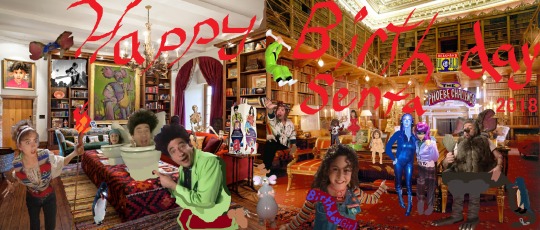
This is a clip and paste image, created for the birthday of Senta Michelle Moses-Mikan, for her birthday August 8. Besides appearing on numerous TV shows, and several movies, we here at 'Beakman Fans' will always think of her as Phoebe, from the season 4 episodes of Beakman's World.
#HappyBirthday #SentaMosesMikan #Phoebe #BeakmansWorld #PaulZaloom #Beakman #AlannaUbach #Josie #ElizaJaneSchneider #Liza #BlueGirl #MarkRitts #Lester #DonAndHerb #Castles #Libraries #Science #Education #Toys #History #Adventure #Vacation #SingingToilets #InternationalRobotoilet
The idea of this Birthday e-Card is simple. The cast of Beakman's World celebrates Phoebe's {Senta Moses-Mikan's} birthday, at their summer vacation property, a castle, in a secret location. {Ok probably just the television studio re-dressed.} Lester {Mark Ritts} practices his ordering dinner from servants, {to a mirror, because whom else would listen}. Don and Herb get their exercise by waddling about the large open areas, {okay they are looking for the remote control, so they can watch their favorite television show}. BlueGirl {a goddess from the sixteenth dimension, also known as Eliza Jane Schneider} has brought along her new sidekick 'Hailey Gardener Tuskernini-Voluptuous' or HGTV {Senta in hero disguise} as we like to call her, {she also likes fixing, and remodeling things}. Next to them are various 'Beakman's World toys, and young images of Senta herself, she looks like such a doll doesn't she? Josie {Alanna Ubach} discovers that the Beakman toy, was trying to dangle from the flagpole for an experiment, and it has began to break loose from the shelf, she reaches out to catch him. Liza {Eliza Jane Schneider}, has helped Beakman come up from the dungeon {cellar}, she still carries the torch, as they place the model toilets on the table, they are a re-design of the 'International Robotoilet' from Tokyo, which Eliza {Liza} had a hand, {or voice} in creating. Beakman {Paul Zaloom}, pressed a button on the side of each toilet, and out pops singing cardboard heads that wish 'the Birthday Girl' a Happy Birthday. Happy Birthday to Senta from all of us here at "Beakman Fans"!!!
#HappyBirthday#SentaMosesMikan#Phoebe#BeakmansWorld#PaulZaloom#Paul Zaloom#Senta Moses-Mikan#Alanna Ubach#Eliza Jane Schneider#Mark Ritts
4 notes
·
View notes
Note
Dear Cat & Mouse: I am in dire need of help finding a fc for a character whose origins go back to the Fertile Crescent. She's female, mid-30s to mid-40s. If you could please help me find someone I'd be so so thankful!
Shannon Elizabeth (1973) Syrian, Lebanese / English, Irish, German.
Dina Azar (1973) Lebanese.
Hilda Khalife (1973) Lebanese Maronite.
Traci Dinwiddie (1973) Syrian / Cherokee.
Joumana Mourad (1973) Syrian.
Viviane Ndour (1973) Lebanese / Mauritanian, Malian.
Suzan Najm Aldeen (1973) Syrian.
Dania Khatib (1973) Lebanese.
Sabine Nahas (1973) Lebanese.
Senta Moses (1973) Lebanese / Italian.
Razan Moughrabi (1973) Lebanese.
Bassima / Paula Al Turk (1973) Lebanese.
Jillian Michaels (1974) ½ Syrian, Lebanese, ¼ Italian, 1/8 Russian Jewish, 1/8 Austrian Jewish.
Maysoon Zayid (1974) Palestinian.
Suheir Hammad (1974) Palestinian.
Aline Khalaf (1974) Lebanese.
Alissar Caracalla (1974) Lebanese.
Clauda Chemaly (1974) Lebanese.
Nicole Saba (1974) Lebanese / Armenian.
Isabel Bayrakdarian (1974) Lebanese, Armenian.
Ana María Orozco (1973) Colombian [Lebanese, Possibly Other].
Annie Parisse (1975) ½ Italian, ¼ Syrian, ¼ Slovak.
Dima Orsho (1975) Syrian.
Coraima Torres (1973) Venezuelan [Lebanese, Possibly Other].
Saba Mubarak (1976) Palestinian / Jordanian.
Rasha Rizk (1976) Syrian.
Soulafa Maamar (1976) Syrian.
Rania Kurdi (1976) Jordanian Arab, Syrian Kurdish, British.
Cherien Dabis (1976) Palestinian / Unknown, possibly Jordanian.
Najwa Nimri (1976) Jordanian / Navarrese.
Dima Al Jundi (1976) Syrian.
Saba Mubarak (1976) Jordanian / Palestinian.
Marwan Naji (1976) Lebanese.
Mireille Safa (1976) Lebanese.
Laura Khalil (1976) Lebanese.
Maya Nasry (1976) Lebanese.
Ana Roces (1976) Lebanese, Filipino.
Katia Kaady (1976) Lebanese.
Maya Nasri (1976) Lebanese.
Yasmine Hamdan (1976) Lebanese.
Diana Haddad (1976) Lebanese Arab / Lebanese Maronite.
Charla Baklayan Faddoul (1976) Syrian, Armenian.
Sulaf Fawakherji (1977) Syrian.
Raya Abirached (1977) Lebanese.
Cyrine Abdelnour (1977) Lebanese, Greek.
Amal Hijazi (1977) Lebanese.
Elissa / Elissar Zakaria Khoury (1977) Lebanese / Syrian.
Tania Khalill (1977) Brazilian [Syrian, Spanish].
Lilia al-Atrash (1977) Syrian.
Paula Sharim (1977) Chilean [Lebanese Jewish, Egyptian Jewish, possibly other].
Joelle Mardinian (1977) ¼ Lebanese, ¼ Syrian, ¼ Armenian, ¼ Italian.
Rima Maktabi (1977) Lebanese.
Bárbara Mori (1978) Uruguayan [Lebanese, Japanese, Basque, Spanish], some Mexican.
Zain Awad (1978) Jordanian.
Mariam Ghani (1978) Lebanese / Pashtun Afghan.
Amal Clooney (1978) Lebanese Druze.
Rola Saad (1978) Lebanese.
Eman Fustok (1978) Syrian, unspecified other.
Yasmine Al Massri (1978) Palestinian / Egyptian.
Natalie Saleeba (1978) Lebanese.
Clarice Assad (1978) Brazilian [¼ Lebanese, ¾ Unspecified Other].
Klára Issová (1979) Syrian / Czech.
Maguy Bou Ghosn (1979) Lebanese.
Maysoon Shaladi (1979) Syrian.
Nelly Makdessy (1979) Lebanese.
Re-Mi Bendali (1979) Lebanese.
Dana Hamdan (1979) Lebanese, Palestinian, Jordanian.
Rindala Kodeih (1979) Lebanese / Unspecified.
Hala Shiha (1979) Lebanese / Egyptian.
Dima Kandalaft (1979) Syrian.
Darine Hamze (1979) Lebanese.
Carole Ammoun (1979) Lebanese.
Nadine Al Rassi (1979) Lebanese.
Nadine Saab (1979) Lebanese.
Nadina Zarifeh (1979) Lebanese.
Tulip Joshi (1979) Lebanese / Gujarati Indian.
Joelle Behlok (1979) Lebanese.
Clemence Achkar (1979) Lebanese.
Verónica Orozco (1979) Colombian [Lebanese, Possibly Other].
Lena Chamamyan (1980) Syrian, Armenian.
Nadja Haddad (1980) Brazilian [Lebanese].
Nadine Salameh (1980) Palestinian.
Yasmine Hanani (1980) Iraqi.
Jenny Esber (1980) Syrian / Ukrainian.
Jaclyn Stapp (1980) Jordanian.
Jenna Dewan (1980) Lebanese, Polish / German, English.
Ayah Marar (1980) Jordanian / Czech, Bulgarian.
Naty Botero (1980) Colombian [Lebanese, Possibly Other].
Viviane Mrad (1980) Lebanese.
Cynthya Karam (1980) Lebanese.
Cristina Abuhazi (1980) Venezuelan [Lebanese].
Lamitta Frangieh (1980) Lebanese.
Abeer Nehme (1980) Lebanese.
Dominique Hourani (1980) Lebanese.
Christina Sawaya (1980) Lebanese.
Maya Diab (1980) Lebanese.
Katia Khatchadourian (1980) Lebanese.
Viola Haqi (1981) Iraqi, Dutch.
Shiri Maimon (1981) Tunisian Jewish, Syrian Jewish, Moroccan Jewish, Algerian Jewish, Greek Jewish.
Majida Issa (1981) Colombian [Lebanese, Italian].
Darine Chahine (1981) Lebanese.
Aline Lahoud (1981) Lebanese.
Darine Hadchiti (1981) Lebanese.
Shatha Hassoun (1981) Iraqi / Moroccan.
Elsa Zgheib (1981) Lebanese.
Bethany Kehdy (1981) Lebanese / Unspecified.
Carla Haddad (1981) Lebanese.
Sabrina Sato (1981) Brazilian [Japanese / Lebanese, Swiss].
Valerie Domínguez (1981) Colombian [Lebanese / Unspecified].
Myriam Atallah (1981) Syrian.
Waad Al Bahri (1981) Syrian.
Martha Issová (1981) Syrian / Czech.
Mais Hamdan (1982) Palestinian, Jordanian, Lebanese.
Nadia Jebril (1982) Palestinian.
Tamara Jaber (1982) Lebanese / Unspecified.
Rouwaida Attieh (1982) Syrian, Lebanese.
Nadia Buari (1982) Lebanese / Ghanaian.
Haya Awad (1982) Jordanian.
Samia Longchambon (1982) Lebanese, French / English.
Layal Abboud (1982) Lebanese.
Dina Hayek (1982) Lebanese / Syrian.
Marcelle Bittar (1982) Brazilian [Lebanese, Portuguese].
Adriana Tarud (1982) Colombian [Lebanese / Unspecified].
Sandra Rizk (1982) Lebanese.
Kinda Alloush (1982) Syrian.
Nesreen Tafesh (1982) Palestinian, Algerian.
Melissa / Myriam Shehab (1982) Lebanese [Iraqi].
Mai Selim (1983) Palestinian, Jordanian, Lebanese.
Meytal Cohen (1983) Iraqi Jewish.
Tammin Sursok (1983) Lebanese, Unspecified Other.
Nancy Nasrallah (1983) Lebanese.
Yara / Carla Nazih al-Berkashi (1983) Lebanese.
Lolita Chammah (1983) Lebanese, Italian / Hungarian Jewish, Slovakian Jewish, German Jewish, Austrian Jewish, French Jewish, French.
Audrey Assad (1983) Syrian / Unspecified Other.
Vinessa Antoine (1983) Trinidadian [African, Syrian].
Nadia Manfoukh (1983) Syrian.
Dena Takruri (1983) Palestinian.
Nancy Ajram (1983) Palestinian Arab / Lebanese.
Diana Karazon (1983) Jordanian [Palestinian, Syrian].
Maha Yakoub (1983) Palestinian, Italian.
Domino Kirke (1983) Iraqi Jewish, Ashkenazi Jewish / English, Scottish.
Susie Youssef (1984) Lebanese.
Kinda Hassan (1984) Lebanese.
Darine (1984) Lebanese / Romanian.
Valeska Saab (1984) Ecuadorian [Lebanese, Spanish].
Nadine Nassib Njeim (1984) Lebanese / Tunisian.
Lara Maria Kay (1984) Lebanese.
Daniella Sarahyba (1984) Brazilian [Lebanese / Spanish (including Galician), Portuguese, possibly other].
Fozi Mozi (1984) Palestinian.
Amelia Vega (1984) Dominican [Lebanese, Cuban, Spanish, English].
Rola Yammout (1984) Lebanese / Egyptian.
Nourhanne (1984) Lebanese, Armenian.
Kinda Hanna (1984) Syrian.
Nancy Afyouny (1984) Lebanese.
Mashael (1984) Lebanese.
Sulaf Jalil (1984) Iraqi.
All from @tasksweekly masterlists! -C
11 notes
·
View notes

